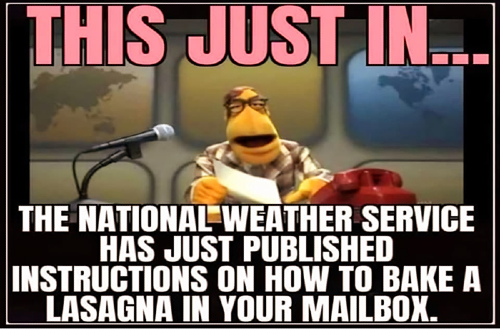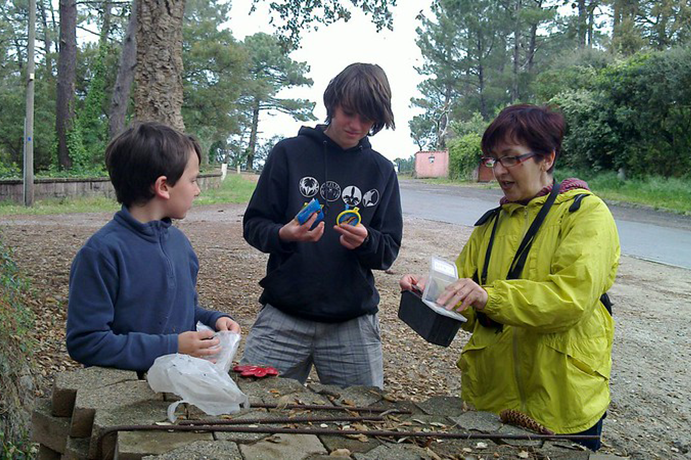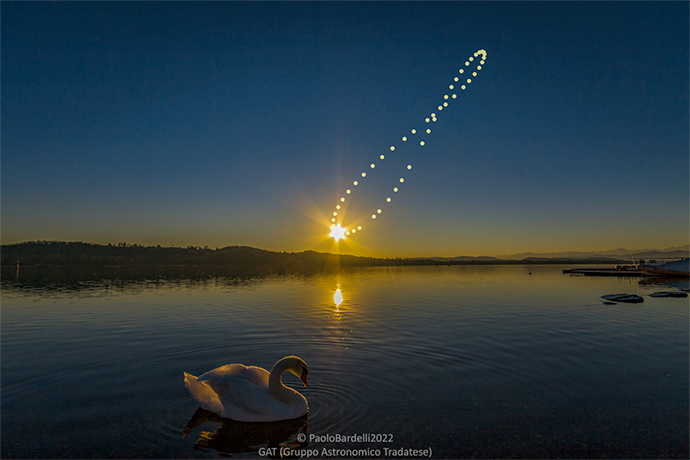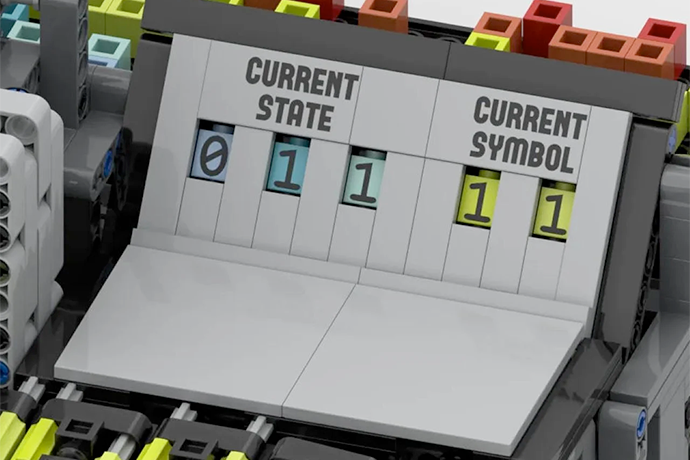1.20.1 🏅 STEM Contests, Thunderstorms, Variables, and History of Time

Welcome! Summer is winding down and I'd like to share a second topic – STEM/STEAM contests – that might be fun to consider for the new school year. There's also information about variables, how time has been defined in different cultures, what causes thunderstorms, and a meme about baking lasagna in your mailbox.
STEM/STEAM Contests
For a second back to school feature, this week I’d like to share STEM/STEAM contest links. There’s no better time, as school begins, for students and teachers to research and plan for upcoming competitions.
Contests are a great way to ensure time for STEM/STEAM activities is put on the calendar for the school year. Competitions let students practice problem-solving skills, use the engineering design process, and learn how to plan and execute projects.
Some contests are run by private companies—for example, Sphero, which makes highly configurable robots. Other contests are sponsored by universities and government agencies.
I’ve compiled information on several contests in the US, Canada, Australia, and UK. Other countries’ competitions can be found online by searching phrases like “Kids STEM STEAM contests (or competition)” along with the name of the country and year. Be sure to sign up for email updates at competition websites, and definitely put them on your calendar.
Canadian Innovation STEM+ Global Contest
The Competitive Kids STEM group sponsors a number of science and math competitions geared toward Canadian students but open to a global audience.
https://www.competitivekids.org/
National STEM Learning Centre
This not-for-profit company in the United Kingdom offers a number of fun competitions for students in the UK and Europe, including AstroPi, a competition to write software that could run on a Raspberry Pi aboard the International Space Station.
https://www.stem.org.uk/secondary/enrichment/competitions
Australian STEM Video Game Challenge
This free contest runs February through October each year. Students in years 4-12 work in teams of up to four to design and develop a video game based on a theme. They submit a game design document as well as their game.
https://www.stemgames.org.au/
Future City
This international contest attracts tens of thousands of students in grades 6-8 who solve a problem that affects cities—for example, how to respond to climate change. Each team has at least three students in addition to an educator and a mentor. The competition can be completed in four months and runs May through February.
https://futurecity.org/
National Science Bowl
The US Department of Energy sponsors this science-based version of a spelling bee, testing middle and high school students on their knowledge of biology, chemistry, Earth science, physics, energy, and math. Teams are made up of four students, one alternate, and a teacher who serves as advisor and coach.
https://science.osti.gov/wdts/nsb
American Rocketry Challenge
Can you shoot a rocket in the air with an egg for payload and not break the egg? This competition for middle and high school students provides the opportunity to design, build, and launch model rockets while learning about—and solving—engineering problems. A winner from the first competition in 2003 launched to the International Space Station in March 2023.
https://rocketcontest.org/
Congressional App Challenge
For US students (if your federal House of Representatives sponsors it), this contest encourages middle and high school students to create software to solve problems in their communities. The topic varies by representative. The contest begins in June and ends in November, making it an ideal summer project.
https://www.congressionalappchallenge.us/
Coding Basics: Variables
Starting with this email, I want to share the common elements of any programming language. It's great to learn one language in depth. Understanding the common features makes it easier to learn other languages.
In software programming, variables are names used to hold one or more values. Instead of repeating these values in multiple places in your code, the variable holds the results of a calculation, database call, results of a database query, or other value. Instead of multiple calculations or the load of multiple database calls to retrieve the same data, the variable is stored in computer memory once and used wherever it is needed in your code.
While every language creates variables and assigns values to them, usually the variable name is on the left and the value is on the right:
answer = 1 + 4 + 2
Sometimes, variables might have a character in front, like $answer instead of answer. And some languages use a specific format: firstAnswer might be preferred in one language while $FirstAnswer is preferred in another.
Variables also store different types of data. But data types are a topic for a future email.
When learning a new language, definitely look for how they create variables and assign values to them. And whether or not people use a preferred format when they name their variables.
Variables
https://kidscodecs.com/variables/
What is a Variable? | Programming Basics
https://youtu.be/iGzM4OlgIuI?si=NRukbSyFoSzI3ogQ
https://www.youtube.com/@codingwithestefania
Coding Basics: Variables | Programming for Beginners
https://youtu.be/ghCbURMWBD8?si=bf9RP5RDOtSGoCSq
Variable (computer science)
https://en.wikipedia.org/wiki/Variable_(computer_science)
CodeGuppy: Variables (coding lessons/exercises)
https://codeguppy.com/code.html?t=_expressions_variables
https://codeguppy.com/code.html?t=_variables_recap
History of Time Keeping
Until recently, people measured time based on the earth’s rotation and its annual journey around the sun. Sundials and water clocks were the earliest technologies used to measure time. Today time is measured by the wavelengths of atoms. Turns out some atoms have measurable patterns more regular and accurate than the rotation of the earth.
And while we think of the length of a second or a minute or an hour as fixed, not likely to change, there have been times when humans adjusted their calendars by hours and days. And some calendars, like the Jewish calendar which is based partly on the 29 day cycle of moon phases, have not adjusted much over thousands of years.
During the French Revolution, in 1793, people came up with a completely different set of names for months and lengths of time. Instead of 60 seconds in a minute, 60 minutes per hour, and 24 hours to a day, the French used 100 seconds per minute, 100 minutes per hour, and 10 hours per day. They changed back after 17 months because it was too confusing and costly to change how people thought about time.
It’s Later than You Think (a history of time)
https://kidscodecs.com/its-later-than-you-think/
Hourglass
https://en.wikipedia.org/wiki/Hourglass
Water Clock
https://en.wikipedia.org/wiki/Water_clock
Unix Time
https://en.wikipedia.org/wiki/Unix_time
Gregorian Calendar
https://en.wikipedia.org/wiki/Gregorian_calendar
Hebrew Calendar
https://en.wikipedia.org/wiki/Hebrew_calendar
Islamic Calendar
https://en.wikipedia.org/wiki/Islamic_calendar
French Republican Calendar
https://en.wikipedia.org/wiki/French_Republican_calendar
Decimal Time in France
https://en.wikipedia.org/wiki/Decimal_time#France
History of Timekeeping Devices
https://en.wikipedia.org/wiki/History_of_timekeeping_devices
What Causes Thunderstorms?
“Thunderstorms have three stages in their life cycle: The developing stage, the mature stage, and the dissipating stage. The developing stage of a thunderstorm is marked by a cumulus cloud that is being pushed upward by a rising column of air (updraft). The cumulus cloud soon looks like a tower (called towering cumulus) as the updraft continues to develop. There is little to no rain during this stage but occasional lightning. The thunderstorm enters the mature stage when the updraft continues to feed the storm, but precipitation begins to fall out of the storm, creating a downdraft (a column of air pushing downward). When the downdraft and rain-cooled air spreads out along the ground it forms a gust front, or a line of gusty winds. The mature stage is the most likely time for hail, heavy rain, frequent lightning, strong winds, and tornadoes. Eventually, a large amount of precipitation is produced and the updraft is overcome by the downdraft beginning the dissipating stage. At the ground, the gust front moves out a long distance from the storm and cuts off the warm moist air that was feeding the thunderstorm. Rainfall decreases in intensity, but lightning remains a danger.”
Severe Weather 101: Thunderstorm Basics
https://www.nssl.noaa.gov/education/svrwx101/thunderstorms/
Understanding Lightning: Thunder
https://www.weather.gov/safety/lightning-science-thunder
Video: What Causes a Thunderstorm?
https://scijinks.gov/thunderstorms-video/
This Week
Our Sunday email this week has fun often offbeat links, for example, did you know that elephants apparently have names? They use these names to communicate. There's also links about self-destructing plastic, how space travel affects the human body, Google's AI alphabet generator, how big tech companies impact innovation, and more. Look for it this Sunday!

To ensure 30 STEM Links appears in your inbox regularly, please follow these steps for a seamless experience:
- If you use Gmail, move our e-mails to your primary inbox.
- If you use Apple Mail, add us to your V.I.P. list. And if you use Outlook, add us to your favorites.
- Add 30 STEM Links to your address book: hello@30stemlinks.com.
- If you use another e-mail client, please use a combination of the above steps.
You received this message because you are a past active subscriber to beanz magazine. Or you signed up to receive e-mails from 30 STEM Links.
You can change your e-mail preferences or unsubscribe at any time by clicking the unsubscribe link below. To modify or cancel your subscription, please visit your account page.
This newsletter is published by 30 STEM Links at 378 Eastwood Rd, Woodmere, NY 11598
For support, please contact us at hello@30stemlinks.com or reply to this e-mail.
Ok, this is actually the end! Thanks for reading! Bye!






Member discussion